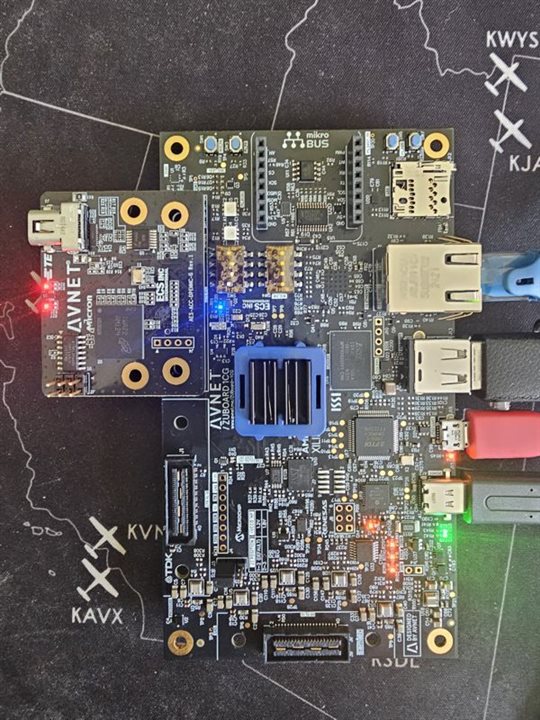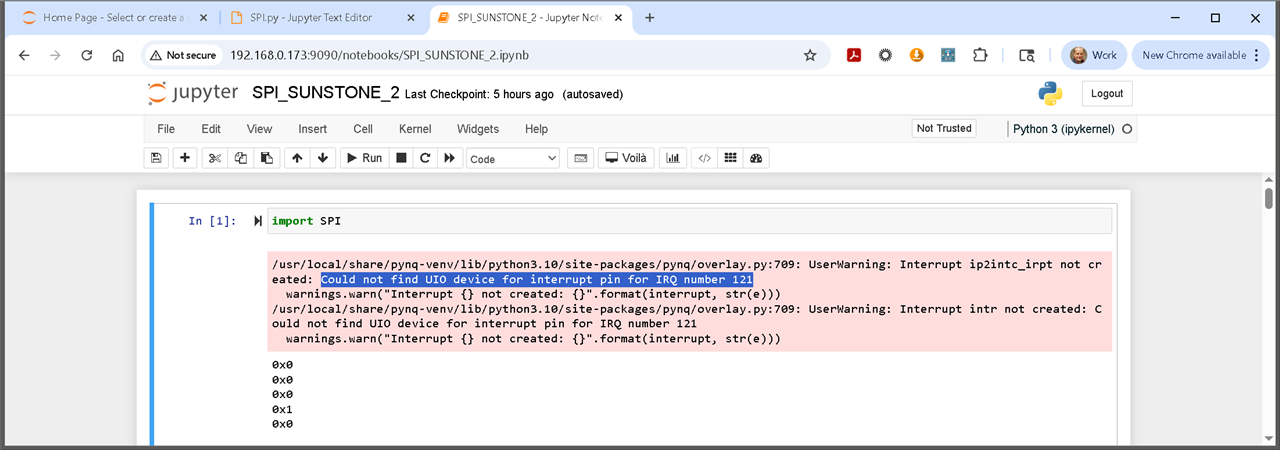My ZUBoard is working fine with the PYNQ SD card image.
Get it from here:
https://www.pynq.io/boards.html
The 'problem':
There are also an eMMC extension board (32GB eMMC, with option to boot from it) and
an extension board to use a M.2 SSD drive (but just as Gen3x2, max. 256GB, and not an option to boot from it,
the ZUBoard does not have a boot option for SSD):
https://www.tria-technologies.com/product/dp-emmc-high-speed-io-module/
https://www.avnet.com/americas/product/avnet-engineering-services/aes-acc-hsio-m2-g/evolve-64660440/
Both boards are working fine, even flashing the eMMC and booting from it works fine (with a PetaLinux image, not PYNQ!)
More details to find here:
https://www.hackster.io/tom-curran/zuboard-boot-linux-from-emmc-5d9447
https://www.hackster.io/tom-curran/zuboard-add-wifi-bluetooth-and-nvme-ssd-f90be2
So, all the HW is fine.
The 'problem' is:
The PYNQ SD card image for the ZUBoard does NOT support these optional and additional interfaces (it does not see it as devices),
such as mmcblk1 seen as the eMMC card or the nvme device for the M.2 SSD.
BTW: you have to buy an SSD M.2 module with a B+M key! (the B-key is needed, as Gen3x2, not M-key as
Gen4x4!
The only SSD module which works for me (sometimes referenced as SATA) is a KingSpec M.2 NVME, 256GB, able to order via:
https://www.amazon.com/dp/B08TTDQ5WH?ref_=ppx_hzod_title_dt_b_fed_asin_title_2_0&th=1
A larger one, e.g. 512GB or larger does not work: make sure your SSD module has a M.2 B-key (or B+M key, but larger as
256GB seems to fail, even it has B+M)
So, eMMC, M.2 SSD are working with a PetaLinux SD card image (as test Linux image):
Best references to replicate:
https://www.hackster.io/tom-curran/zuboard-boot-linux-from-emmc-5d9447
https://www.hackster.io/tom-curran/zuboard-add-wifi-bluetooth-and-nvme-ssd-f90be2
My needs:
I want to have a ZuBoard PYNQ SD card image which also 'sees' the eMMC module or the M.2 SDD module.
I need an additional fast memory device (not just the SD card or USB memory stick - works) to record fast
sensor data.
Is there anybody:
- which has a PetaLinux setup for ZUBoard PYNQ image generation
- where he could add support for eMMC and/or SSD
- and publish this image
- ?
What is the fastest way to get ZUBoard PYNQ Linux image extended by eMMC (mmcblk1) or SSD (nvme)?
As I understand: it is necessary to get the PYNQ repository, to install and use PetaLinux and to modify the project, generate...
But not an easier way?, e.g. to extend the working PetaLinux (test) image with the PYNQ extension?
(as I understand: these PetaLinux images see the other boards and devices, but it does not have the PYNQ extension,
esp. not the FPGAManager integrated, and the image.ub file at the end does not enable these devices on PYNQ).
What happens if I 'mix' the PetaLinux with the PYNQ image (e.g. use the PYNQ image.ub file instead):
It works fine to boot, but loading an overlay does not work. Also: the PYNQ image.ub does not enable the
eMMC driver nor the M.2 SSD nvme driver. I cannot load a *.bit file (assuming in the PetaLinux image the FPGA manager
is not enabled).
So, it should be a small effort to add to ZUBoard PYNQ Linux image project to add and enable these devices.
If anybody has a ZUBoard PYNQ image supporting also the AVNET extensions board - I appreciate if you can share
the *.IMG file or help to setup the PetaLinux PYNQ project in order to add and modify. Thank you.
Dear AVNET team:
please, provide a ZUBoard PYNQ SD card image which would support your extensions boards. Thank you.


